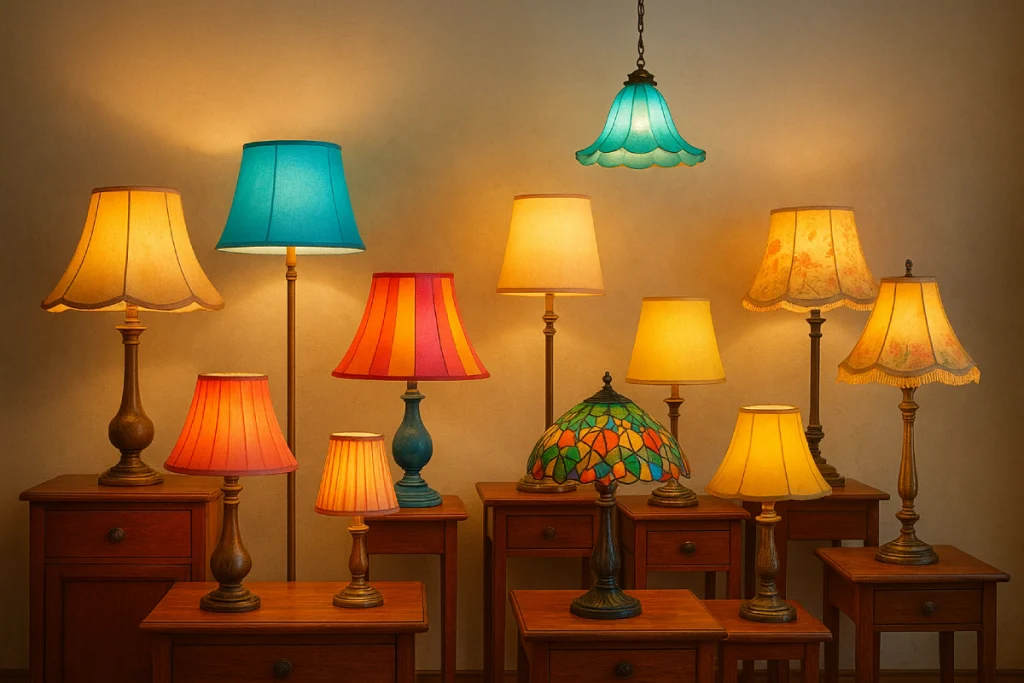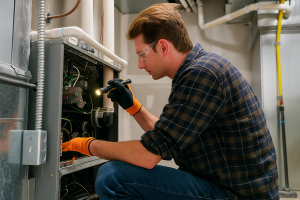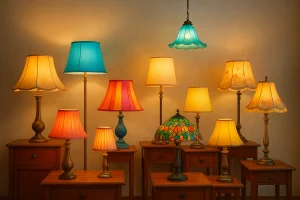Where to Find Secondhand Lamps and Lighting Fixtures
Thrift Stores and Flea Markets
Local thrift shops are treasure troves for discarded lamps. Often, they’re priced low because of minor cosmetic flaws or outdated wiring, both of which are easy to fix. Flea markets also offer quirky and unusual finds that you won’t see in chain stores.
Estate Sales and Auctions
Estate sales are goldmines for vintage lighting. Many homeowners keep lamps for decades, meaning you could snag authentic mid-century or Victorian pieces. Auctions—both live and online—are also excellent for scoring collectible lamps at fair prices.
Online Marketplaces
Websites like Facebook Marketplace, Craigslist, and eBay are popular spots for sourcing lamps. Many sellers list items they no longer need, and with a little patience, you can land unique pieces at a fraction of retail cost.
Habitat for Humanity ReStores and Salvage Yards
ReStores carry used home improvement items, including lighting. Salvage yards can surprise you with antique or industrial-style lamps salvaged from old buildings.
Popular Styles of Older Lamps Worth Restoring
Mid-Century Modern Lamps
Known for sleek lines and bold colors, mid-century modern lamps remain a favorite among homeowners who love retro chic. Restoring one can give your home a trendy yet timeless vibe.
Victorian and Art Nouveau Styles
Ornate detailing, floral motifs, and curved bases make these lamps works of art. While fragile, they can be restored into elegant showpieces.
Industrial and Rustic Lighting
Raw materials like metal, steel, and wood define this style. These lamps are perfect for lofts, workshops, and rustic homes.
1970s & 1980s Retro Styles
Think lava lamps, chrome finishes, and funky shapes. These quirky designs are perfect for eclectic interiors.
Why Older Lamps Are Ideal for Upcycling
Quality Materials and Craftsmanship
Older lamps were often made with brass, stained glass, and hardwood—materials rarely found in affordable new lighting today.
Unique Character and Timeless Designs
Unlike mass-produced modern fixtures, vintage lamps have charm and individuality.
Sustainability and Reducing Waste
Restoring lamps is eco-friendly. Instead of tossing them into landfills, you’re giving them new life while reducing manufacturing demand.
What to Look for When Choosing a Lamp to Restore
Structural Integrity and Base Stability
Check the lamp’s base and frame. A wobbly lamp can usually be fixed, but severe cracks may not be worth the effort.
Wiring Condition and Electrical Safety
If wires are frayed, brittle, or exposed, you’ll need to rewire. Luckily, rewiring is one of the most common (and easiest) lamp repairs.
Materials (Brass, Glass, Ceramic, Wood, etc.)
Brass polishes beautifully, glass shades can be cleaned or replaced, and wood bases can be sanded and refinished.
Replaceable or Customizable Features
Look for lamps with detachable shades or modular parts. These offer more flexibility for customization.
Tools and Supplies Needed for Lamp Restoration
Restoring an old lamp doesn’t require an entire workshop, but having the right set of tools and materials will make the process smoother and more enjoyable. At the most basic level, you’ll need hand tools like screwdrivers, pliers, and a good pair of wire cutters or strippers. These allow you to take the lamp apart, replace worn components, and prepare new wiring.
Electrical supplies are the heart of any restoration project. A new socket, fresh wiring, and a functional switch or plug can breathe life into an otherwise forgotten lamp. Many home improvement stores sell complete lamp rewiring kits, which are perfect for beginners since they come with all the essentials in one package.
For those interested in giving their lamp a decorative makeover, keep paint, fabric, and finishing supplies on hand. Spray paint in matte or metallic tones can modernize an outdated brass base, while fresh fabric or parchment can transform a tired shade. If you want to go a step further, decorative trims, stencils, or decals add personal flair. Most of these supplies are easy to find at hardware stores, craft shops, or online retailers that specialize in lamp parts.

Tools & Materials
Basic Tools
-
Screwdrivers (flathead & Phillips)
-
Pliers (needle-nose preferred)
-
Wire cutters/strippers
Electrical Supplies
-
Replacement sockets
-
Wiring kits
-
Switches and plugs
Decorative Supplies
-
Spray paint (heat-safe if used near bulbs)
-
Fabric or parchment for custom lamp shades
-
Decorative trim, stencils, or decals
Where to Buy Tools and Replacement Parts
-
Hardware stores (Home Depot, Lowe’s)
-
Craft stores (Michaels, Joann)
-
Online shops like LampParts.com or RoyalLampShades.com
Step-by-Step Guide to Repairing and Restoring Lamps
The restoration process typically begins with cleaning and preparation. Unplug the lamp and carefully disassemble it, taking note of how each part fits together. Dirt, tarnish, or old paint can obscure the lamp’s true potential, so spend time polishing metal, washing glass, or sanding wooden surfaces. This stage alone can dramatically improve the appearance.
Rewiring is often the next step. While it may sound intimidating, replacing old wires is straightforward if you follow the right instructions. Thread new wire through the lamp’s body, connect it securely to a replacement socket, and attach the plug. Testing the lamp with a low-wattage bulb first helps ensure everything is safe before regular use.
Don’t overlook the base and shade. A wobbly lamp can be corrected by tightening screws or adding a stabilizing pad, while a damaged wooden base can be refinished with stain or paint. Shades, too, deserve attention—re-covering them with fresh fabric or swapping them for a new one can completely redefine the lamp’s style. Taken together, these steps turn a neglected fixture into a functional, beautiful piece that feels brand new.

QUICK LIST
Cleaning and Prepping the Lamp
Start by unplugging and disassembling the lamp. Clean metal with polish, wash glass with mild soap, and wipe wood with oil-based cleaners.
Rewiring a Lamp Safely
-
Remove the old socket and wiring.
-
Thread new wire through the lamp body.
-
Attach wires to the socket and plug.
-
Test with a low-wattage bulb before full use.
Fixing Lamp Bases and Stands
For wobbly bases, tighten screws or add felt pads. For wooden bases, sand and refinish with stain or paint.
Restoring or Replacing Shades
Fabric shades can be re-covered with new fabric. Glass shades can be replaced with modern versions or custom stained glass.
Creative Ways to Make Restored Lamps Unique
Once your lamp is safe and functional, the fun truly begins—customization. Vintage frames pair beautifully with modern touches, such as bold geometric shades or Edison bulbs, creating a fusion of old and new. Some DIYers enjoy experimenting with contrasting materials, like combining a sleek metal base with a rustic wooden top for an industrial-meets-modern look.
Another avenue for creativity is repurposing. Almost any sturdy object can become a lamp base, from old teapots to wine bottles to antique cameras. This approach not only produces conversation-starting décor but also ensures your lamp is truly one-of-a-kind.
For those who prefer a more artistic route, paint and decorative finishes offer endless options. A splash of matte black can bring sophistication, while gold leafing or metallic spray adds glamour. Stencils, decals, and trims allow you to personalize further, transforming your restored lamp into both a functional light source and a statement piece that reflects your personality.
Inspiring Examples of Restored and Upcycled Lamps
Here are a few places where you can find inspiration:
-
Instructables: The World of DIY Lamps
-
Pintrest: 30 DIY Lamp Ideas
Safety Tips When Working With Electrical Fixtures
-
Always unplug before working.
-
Use UL-certified parts.
-
Don’t exceed recommended bulb wattage.
-
When in doubt, consult a licensed electrician.
Cost vs. Value: Is Restoring Lamps Worth It?
Most DIY lamp restorations cost between $15–$50, depending on materials. Compared to buying a $200 designer lamp, the savings are significant. Plus, you get a one-of-a-kind piece that can become a conversation starter in your home.
Restoring and salvaging lamps is more than a weekend project—it’s a chance to combine sustainability, creativity, and craftsmanship into something functional and beautiful. Whether you’re a first-time homeowner hunting for affordable décor, a seasoned DIYer craving a new project, or a property owner wanting to refresh old fixtures, lamp restoration is an accessible and rewarding path.
By salvaging instead of buying new, you’re not just saving money—you’re creating lighting that tells a story, lights up your home, and truly shines with personality.










